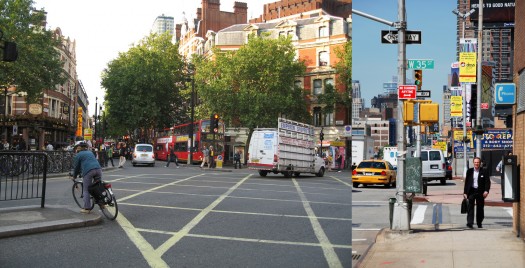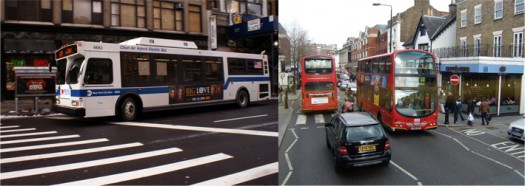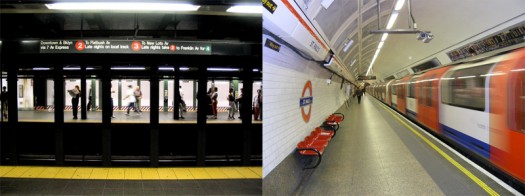
We are celebrating 15 years — and counting — of stories that are deeply researched and deeply felt, that build a historical record of what the city has been.
We are celebrating 15 years — and counting — of stories that are deeply researched and deeply felt, that build a historical record of what the city has been.
When we complain about urban services – like the rising costs of the subway system or inconsistent opportunities for streetside trash disposal – who do we wish would listen and act? The various branches of city government? City Hall? The Mayor himself? Our current mayor might control more than most – from our city’s public school system to financial news – but what is the city government that he heads actually empowered to do?
Five years ago, a collection of international urban experts convened in New York for the first conference of the Urban Age project, a worldwide investigation into the future of cities that has since visited Shanghai, London, Johannesburg, Mexico City, Berlin, Sao Paulo, Mumbai and Istanbul. One of these experts is Harvard Law Professor Gerald Frug, who shares with Omnibus readers his 2005 speech comparing the structures and powers of city government in London and New York. Five years later, the topic is even more relevant, with Bloomberg in his third term, the inefficiencies of Albany (and Washington) exacerbated by the financial crisis, New York’s PlaNYC in full effect and London’s replacing the London Plan with a brand new one.
Each week, Urban Omnibus presents an idea that, in some way or another, could make New York City a little bit better. But we’ve never asked what New York City itself, as embodied by its city government, can really do. Asking this question – and looking comparatively at precedents from outside our city and our country – must underlie how we design, plan and organize for urban change. – C.S.
All city governments are dysfunctional. But each is dysfunctional in its own way.
Some people treat the city governments of London and New York as being a lot alike. After all, each has an elected Mayor and a separately elected city council or assembly; each is city with roughly 7-8 million people in a metropolitan area of roughly 18-20 million. If you compare the cities with this kind of similarity in mind, New York seems way ahead of London in terms of the authority it exercises. To give just a few examples, New York has the largest municipal hospital system in the country – with 11 hospitals and more than 100 community health clinics. It educates over 1 million children in primary and secondary schools, provides housing to 420,000 city residents, runs 29 job centers, has 60,000 children in child care programs, provides over 200 shelters for the homeless, operates 1,700 parks, manages the city’s water supply, admits 110,000 individuals to its prison facilities every year, and has more than 2,000 trucks picking up 12,000 tons of waste every day.
London’s city government – the Greater London Authority – does none of these things. None. All of these kinds of services are provided either by the national government or by the 33 local governments within London – London’s 32 boroughs and its financial district, the City of London. New York City government is overwhelmingly a service government – it provides services of an incredible variety and scope to its residents. That’s not what London’s city-wide government is. New York City’s government in many ways is more comparable to London’s boroughs than it is to the Greater London Authority. In terms of service delivery, London’s city-wide government is very weak. From a service point of view, some people think that London should become more like New York.
I think that this is the wrong way to think about the comparison between the two cities. For our purposes, London’s city-wide government has a lot to teach New York. To think about issues such as work and home life, public space and private space, the neighborhoods and the region, cars and mass transit, immigrant businesses and high finance, policy making and urban design, the metropolitan region and the city block, New York and London both have to think about how and where they should grow. London has the capacity to do this, and New York City doesn’t.

Left: Cambridge Circus by Flickr user marttj; Right: 11th Avenue by Flickr user DavidMenting.
New York City lacks a vital ability: it doesn’t have the power to plan for, let alone determine, its own future. In 2004, the Greater London Authority published a document called the London Plan. It lays out a vision of the city in terms of transportation, economic development, housing, public space – along with the environment, social exclusion, tourism, culture, design and many other ingredients. The London Plan envisions London as connected to those around it – to its own Southeast Region in the UK, to northern Europe and the European Union more generally, and, finally, to the world. The London Plan examines both London as a whole and specific sites on specific blocks within the city. It seeks to understand how the different kinds of urban questions fit together – and what to do about them. It’s important to emphasize that the Greater London Authority didn’t just decide to write this plan. It was legally required to do so by an Act of Parliament. To an American reader, it presents the very kind of regional thinking urbanists long for – regional thinking that covers, and organizes, the work of 33 constituent municipal governments. True, the document focus only on Greater London, which itself is only part of the UK’s Southeast Region. And London is also only one actor among many focusing on these problems. It has to deal with boroughs, the private sector, other local governments – and above all, the national government. Still, because it comes with force of a statutory mandate, the London Plan is designed to be taken seriously.
For this kind of undertaking, New York City is completely dysfunctional. There is no document such as the London Plan for the City of New York – and no organization now exists with the authority to write one. There is also no government agency that is thinking about the future of the City of New York in terms of its connection even with the narrowest definition of its region – one that would include the parts of New Jersey right across the Hudson River. It’s not that no one is thinking systematically about New York City and its region. The Regional Plan Association has done absolutely terrific work over many decades thinking about our kinds of issues. They have a problem, however. It’s not merely that they are a non-profit organization, rather than a government agency. It’s that there’s no one they can talk to – the government authority in this region is so fractured that it’s hard to get any of the pieces to begin to fit together. Their problem is our problem. When we discuss ideas of transportation, labor, public space, and housing, we should keep in mind a fundamental question: who could possibly implement any of our ideas?

Left: NYC bus, by Flickr user Aqualung1981; Right: London buses by Flickr user TCDavis.
Like London, New York City can only exercise the power delegated to it by a central government. The Greater London Authority can only do things authorized by Parliament. New York City’s power does not come from the national government; the federal government in the United States plays a relatively minor and mostly destructive role in determining local power. Here, New York State exercises the kind of authority over New York City that Parliament exercises over London. Don’t be fooled by the phrase home rule. Home rule gives New York City somewhat more leeway when confronted with its centralized government than London has. For example, it gives New York City the power to pass local regulatory ordinances, which the Greater London Authority cannot do. Still, notwithstanding home rule, New York State ultimately remains in control over such critical urban issues as housing, transportation, economic development, and the city’s finances.
In setting up New York City, New York State has denied it control over many of the most important ingredients of urban life. New York State has fractured government authority in the region by giving power not to the city but to state-controlled public authorities (or quangos, as the British call them). Much of the important development in the city is controlled not by the city but by the Empire State Development Corporation – an agency, appointed by the Governor not the Mayor, that, directly or through subsidiaries, dominates major projects ranging from Ground Zero to Battery Park City to Times Square. The two most important actors on transportation issues are the Metropolitan Transportation Authority and the Port Authority of New York and New Jersey. The Metropolitan Transportation Authority is appointed by New York State’s Governor, with only 4 of its 17 members recommended by the city; the Port Authority is appointed by two Governors, without any city input. Public space is divided up into more than 50 business improvement districts governed by property owners and not city residents. For example, the Union Square Partnership – the oldest business improvement district in New York – manages the streets on a day-to-day basis. Given all this fragmentation, New York City lacks a vital ability: it doesn’t have the power to plan for, let alone determine, its own future.

Left: New York City subway by Flickr user Ed Coyle Photography; Right: London tube by Ana Travas & Sergej Skrjanec (Flickr user ComplementaryDuo).
Consider mobility and transport. The Greater London Authority has responsibility for transportation in London – largely through an organization called Transport for London, whose board is completely appointed by the Mayor. And transportation is very widely defined: it includes the buses and the underground, highways and car traffic, cabs and mini-cabs, walking and cycling. The Mayor and Transport for London have the statutory obligation to make sense of how cars and mass-transit, along with cabs and bicycles, create a city-wide transportation system. Sure, the Mayor of London doesn’t control everything – the railroads, the airports, and major highways are in the hands of the national government (or the private sector) and local streets in the hands of the boroughs. But if the Mayor is energetic and proactive, he can be the key guy on the issue.
New York State has given New York City a heart, but no brain. Parliament has given London a brain, but no muscle. New York is miles behind London in thinking about transportation. The state has divided authority over transport in a way that no one could conceivably defend. The Metropolitan Transportation Authority runs New York City’s subways and buses, along with the Long Island Railroad; the Port Authority runs the airports, PATH trains to New Jersey, and the Air Train at JFK; New Jersey Transit, appointed by New Jersey’s governor, runs its own trains and buses into New York. The Transportation Authority operates nine bridges and tunnels; the Port Authority controls other bridges and tunnels, including the Lincoln Tunnel and the George Washington Bridge; the New York City’s Department of Transportation controls still other bridges and tunnels, such as the 59th Street Bridge. The highways are run by the New York and New Jersey State Departments of Transportation. And the New York City Taxi and Limousine Commission licenses the city’s taxis. Transportation, you should know, is the area for which the federal government is most insistent on metropolitan planning. The problem for New York is that there are many metropolitan transportation planning bodies in the area, not just one. One deals with New York City and a few nearby New York suburbs; another deals with New Jersey; yet another deals with Connecticut. No one, starting from scratch, would devise a transport and mobility structure like this one. To declare this set up a scandal would be a waste of time. Everyone knows it’s a scandal; it’s been a scandal for decades.
The basic difference between New York and London can be summarized very simply. New York State has given New York City a heart, but no brain. Parliament has given London a brain, but no muscle. And a brain is what a city needs at this moment on the kinds of issues we are addressing. By saying this I mean no disrespect whatsoever to the officials of either city – New York has many very smart people working on the city’s future and London has many who are physically strong. It’s the city government, not its employees, that I’m referring to here: it’s the New York City government that has been denied the ability to think about, let alone take control of, its own future.
London shows that this is not necessary. The State of New York could authorize the Mayor to work with others – public and private, regional and neighborhood – to prepare something like the London Plan. And it can give him the power to bring the multiple public authorities into compliance with his plan. If a more regional organization is thought better, the states of New York and New Jersey can together create a democratically accountable organization – democratically organized like the Greater London Authority – empowered to write such a plan. This could be done today if the political leadership took seriously the importance of nurturing New York as a global city. That’s the vision of London that animates the London Plan. Many people will call this idea utopian, but it’s only utopian because the state has set up the city – and the region – in a way that makes it so hard to do. Changing this requires the kind of political muscle that in 1986 abolished the London-wide government and that, now, has created a new one to help guide its future. We could use the exercise of that kind of muscle here in New York.
This text is adapted from a speech delivered at the Urban Age conference, February 2005.
The views expressed here are those of the authors only and do not reflect the position of The Architectural League of New York.
Comments